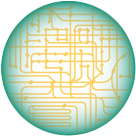Engineering Novel Microbes for Upcycling Waste Plastic
Authors:
Jinjin Diao* ([email protected]), Yuxin Tian, Yifeng Hu, Tae Seok Moon, Joshua Yuan
Institutions:
Washington University in St. Louis
URLs:
Goals
The goal is to develop a consolidated biological process to upcycle waste polyethylene terephthalate (PET).
Abstract
With its versatile applications in many industrial sectors, the global annual production of PET exceeds 70 million tons. However, less than 20% of that volume can be currently recycled. The accumulation of waste PET in the biosphere has become a global pollution concern, motivating the urgent development of technologies to valorize post-consumer PET and tackle the challenge of its end-of-life management. One solution to address this issue is to upcycle waste PET rather than recycle it to generate the same PET typically with low quality. PET upcycling can be achieved by depolymerizing PET into terephthalic acid (TPA) and ethylene glycol (EG) and biologically converting these monomers into value-added products. Owing to its metabolic capacity of degrading ethylene glycol and terephthalic acid, Rhodococcus jostii strain PET (RPET) has been developed as a microbial chassis for PET upcycling (Diao et al 2023). However, the scarcity of synthetic biology tools specifically designed for RPET limits the development of the corresponding microbial cell factories for expanding the repertoire of bioproducts from post-consumer PET. To overcome this limitation, researchers have described the development of potent genetic tools in RPET, including: (1) two inducible and titratable expression systems for tunable gene expression; and (2) Serine Integrase-based Recombinational Tools (SIRT) for genome editing. Using these tools, researchers systematically engineer strain RPET to establish microbial supply chains for the goal of producing chemicals, including lycopene and lipids from post-consumer PET. With these genetic toolkits at hand, subsequently, researchers enhanced lycopene production by introducing the biosynthetic mevalonate pathway. Moreover, it validated the proof-of-concept of efficiently converting waste PET into biofuels by assembling a functional module to decouple the lipid biosynthesis from nitrogen starvation in RPET (Diao et al. In preparation). Finally, researchers further estimated the potential of PET bio-upcycling by developing a continuous fed-batch fermentation strategy for the co-production of lycopene and lipids from post-consumer PET. Overall, this work significantly expands the capacity to manipulate and engineer the strain RPET, paving the way for establishing the microbial supply chain that produces chemicals from post-consumer PET.
References
Diao, J., et al. 2023. “Upcycling of Poly(Ethylene Terephthalate) to Produce High-Value Bioproducts,” Cell Reports 42, 111908.
Diao, J., et al. In preparation (to be submitted in the spring of 2024). “An Alternative Supply Chain for Producing Chemicals Through Biological Upcycling of Poly(Ethylene Terephthalate).”
Funding Information
This research was supported by the DOE Office of Science, BER Program, grant no. DE-SC0022003.
